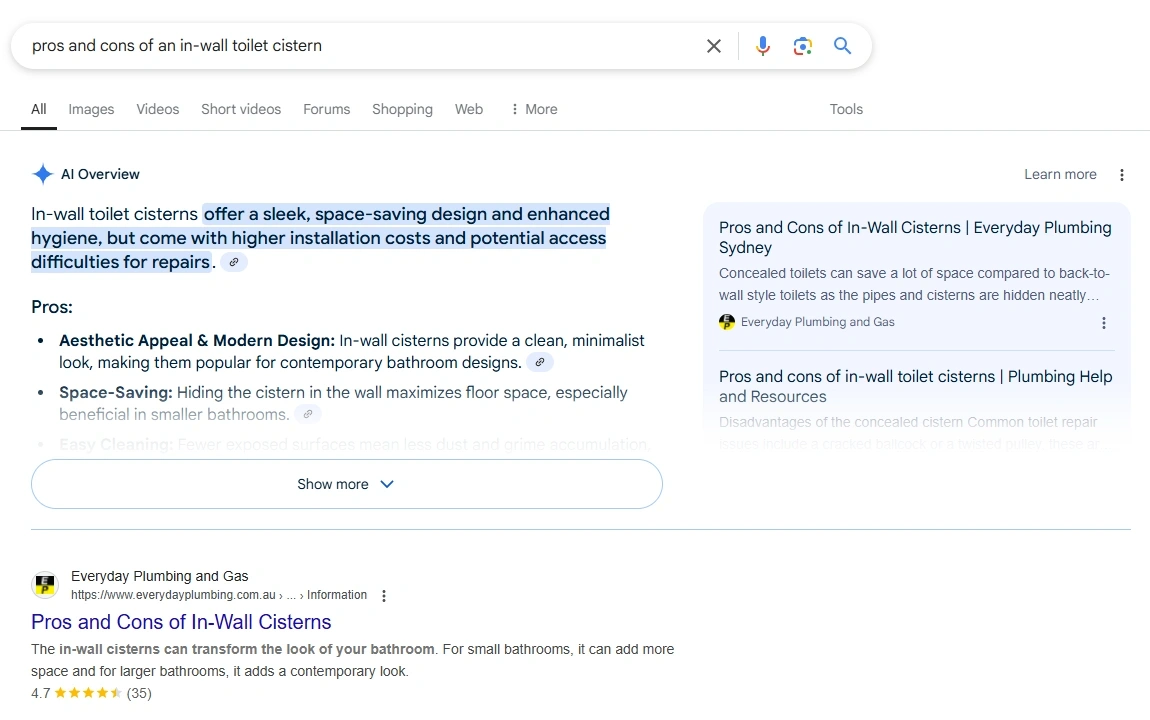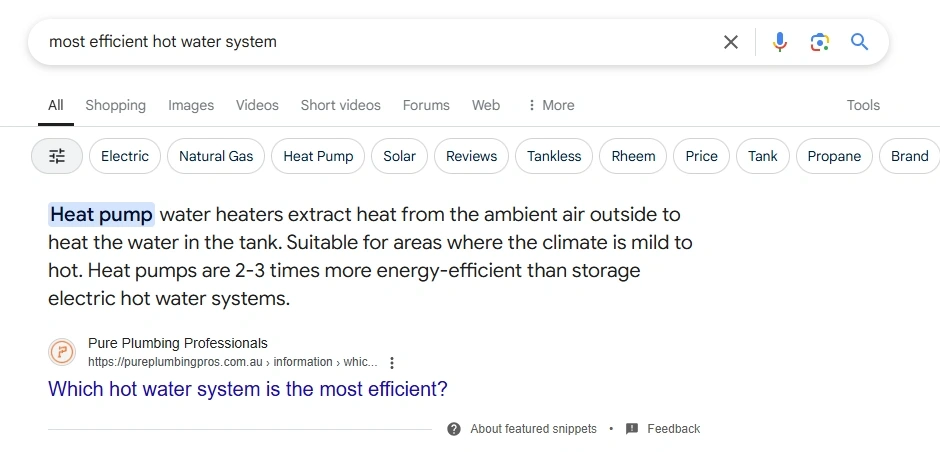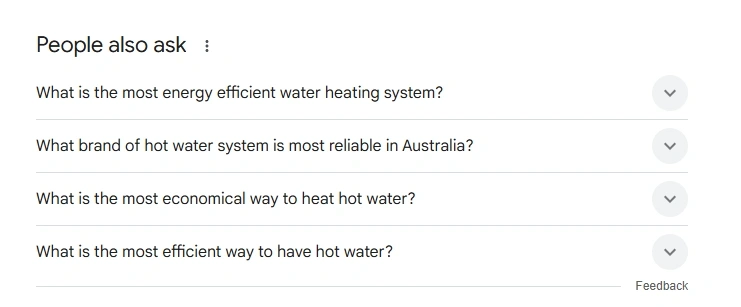What are AI Overviews and how do they impact SEO?
The digital marketing and SEO industry sure do love jargon and acronyms that confuse the average person. The latest one getting all the attention is AIO's or AI Overviews. If you've read anything on this, then you're bound to have also come across the concern about the impact on SEO and whether it is even worth continuing with SEO. Read on to find out exactly what they are and what the impact will be to SEO.
What is an AI Overview?
An AI Overview (or AIO for short) is where Google attempts to give you the answer at the top of the search page (SERP) before the normal listings. So rather than having to click through multiple listings yourself to find an answer, Google’s AI will do this for you and give you what it believes is the answer. In other words, it is doing the same thing as ChatGPT, Gemini, Perplexity, Claude……..; but within the Google Search Page.

A quick history of Google and AI
Before we get into the impact of AIOs on SEO, I think it is worth having a quick look at the history of Google’s use of AI. With the appearance of ChatGPT in November 2022, there has been a common misconception that Google was playing catch-up. This couldn’t be further from the truth, and in fact, Google has been using AI (or what was initially known as Machine Learning) since the early 2000s. Here are some key dates:
- 2001 - Machine learning used for spelling in Search
- 2006 - Google Translate, developed with machine learning
- 2015 - RankBrain developed to better understand search queries
- 2015 - Google open sources their machine learning framework
- 2018 - Neural Matching introduced to search, to better understand website content beyond just keywords
- 2019 - BERT developed to better understand the context around words
- 2021 - MUM implemented to search to better understand searchers need and deliver appropriate content, whether copy, images, video etc.
So as you can see, Google has been working with AI, and more importantly, working with it in “search” since 2001. Where they got caught short by ChatGPT, was in not having it set up with an end user interface for the average user. They have since rectified this with “Gemini”.
So why is this all important to our discussion about AIOs and their impact on SEO?
The simple answer is that we have been dealing with the impact of AI on SEO for over 20 years. AIOs is simply the latest iteration. We’ve had things like:
- Rich snippets: featured listings with a few lines of relevant content from the webpage

- People also ask: a series of questions related to the search, with a dropdown with highlighted content.

Over this time, we’ve had people talking about “Zero-Click” searches and the slow death of SEO.
Where does Google get the information from for their AIOs?
Google being Google keeps this information to themselves, but as you can imagine, there have been countless studies to try and work out where they are pulling the data. One study by seoClarity found that:
- 99.5% of the time, at least one of the top ten listed webpages was used as a source
- 80% of the time, one of the top 3 ranked listings is used
- 77% of the time, all referenced sources were in the top 10 listings.
So in summary, AIOs predominately source their data from the listings on page 1 of Google. They do occasionally use a random source from outside the top 10, but there is no clear answer to what triggers Google to do this.
Source: https://www.seoclarity.net/research/ai-overviews-impact
How does AI Overviews affect your website’s SEO?
Before we dig into this, first we need to understand how often Google is showing AIOs. Once again, we need to look at the countless studies done on this. If we narrow the studies down to the major SEO platforms that track millions of searches, we get a range of between 4.5% and 12.5%. This is across all searches, but we’ll discuss the different search types in a bit.
What is the direct impact on your website?
The biggest impact on your website is a drop in traffic (or visitors). If someone searches a specific topic and the AIO gives them the answer, they have no need to click through to your website. This is where the term “Zero-Click” searches comes from; the searcher doesn’t click on any links in the search results.
Interesting Fact: One study found that 60% of searches in Google in 2024 were zero-click.
Another, less talked about impact, is that while your website is getting fewer clicks, it is getting more impressions. An impression is where your website is listed by Google for searches. The reason for this is simply because your website is now getting an extra listing on the search results page. If you were previously ranking number 1 in Google, you were getting one impression for a relevant search. Now you are being listed twice, once in the normal organic listings and, secondly, in the AOI’s sources list. You can see that on the AIO example above, where one of our client sites is both in the AIO and the number 1 position for the search.
Here is a screenshot of one of our client websites' Google Search Console performance chart. Pretty clear when AIOs were launched in Australia. See how clicks dropped, but impressions increased.

What about the impact on Conversions?
Whilst website traffic can be a good KPI to measure, if you’re familiar with Probity Web Marketing, you’ll know we’re all about the conversions. So what is the impact on conversions?
Search intent and AOIs
If you’re not familiar with the different types of search intent, I recommend you read our page “what is search intent”.
The purpose of an AOI is to give the searcher an answer to their search query without having to click through to a number of websites. So it makes sense that they are primarily aimed at informational searches, where the searcher is simply looking for an answer. If they are looking for a business to buy from, then they won’t be as useful. So it won’t surprise you to know that studies back this up, with more than 90% of searches, on average, showing AOIs are for informational intent. Transactional intent accounts for under 10% with most studies showing 3-5%. So in other words, the vast majority of the 4.5% to 12.5% of searches that show an AIO are for informational intent.
So as transactional searches account for the majority of a websites’ conversions, we wouldn’t expect to see a real drop. This is supported by our own data at time of writing this article (March 2025).
AIOs and engagement
So we understand that AIOs will result in less clicks to your website (mainly for informational searches), but what about the clicks you still get? This is a hard one to quantify, but I firmly believe that these visitors will be a lot more engaged and more likely to convert. If we consider that informational searches are generally for people just starting to research a purchase, they can complete their research with the AIO and then click through to one of the source websites to buy. Compare this to someone working their way through several listings from the same search.
How do we see AIOs affecting our client websites?
We have a proven structure that we use when building our website that we know works for SEO. Part of this structure, is what we call our “Info Pages”. These “Info Pages” are developed to answer questions that searchers may have with our different topic clusters or pillars (main services). These pages are written by a real person (not AI) and aim to answer the query to a high level. As a result, we rank extremely well for these pages.
So, as you would expect, these pages are perfectly placed to be used as sources by Google in their AIOs. This assumption has been completely backed up by our own data, and we are seeing our sites doing extremely well in AIOs.
Our “Info Pages” have 2 main purposes for our websites, these being:
- Authority: build authority with Google around the topic clusters.
- Traffic: drive top-of-funnel traffic to the website so we can consider retargeting campaigns etc.
So let’s consider the impact on these 2 purposes. I believe we are still getting authority, even if we don’t get the click. Google is using us as a source, so they obviously see our website as an authority site on the topic. Traffic is where we have a negative impact, but only if we are running retargeting campaigns from this traffic (just a few websites). As we mentioned above about engagement, whilst we are getting less traffic from these searches, we are getting a higher conversion rate as the traffic that does come through is more engaged and committed.
So in summary, yes, AIOs are having an impact on traffic to websites, but not much of an impact on the conversions.
One last thought
Rather than buy into all the crisis merchants out there continually spruiking the death of SEO, I think it is important to use common sense and think about what Google is trying to achieve and what is important to them. Here are a few observations that I believe show that SEO will continue to be important.
- Google makes their money from Google Ads, so they need you using Google Search. So they need to ensure it is giving the best experience and results to their users.
- That's not to say that search won't change to a different layout (eg. AI Chat).
- Google and AI need to get their data from somewhere to continue to be up-to-date, accurate and relevant. The obvious source will be websites.
- If these websites get no benefit, they will stop being updated and even existing. So Google and AI need to factor this into how they present information.
- Google and AI need to decide which websites to get their data from. To help them with this, there will be a version of SEO to ensure your website is chosen.
So nothing changes here at Probity Web Marketing. We believe if we continue building well structured websites, with great content that answers searchers questions, they will keep converting for our clients. Of course we will also continue looking for other strategies and channels to complement this, like social, video, email to name a few.
Sources:
- https://blog.google/intl/en-au/company-news/outreach-initiatives/ai-overviews-australia/
- https://www.searchenginejournal.com/impact-of-ai-overviews-on-seo/539982/
- https://blog.google/technology/ai/google-ai-ml-timeline/
- https://www.semrush.com/blog/ai-overviews/
- https://www.searchenginejournal.com/the-shift-to-zero-click-searches-is-traffic-king/540847/

